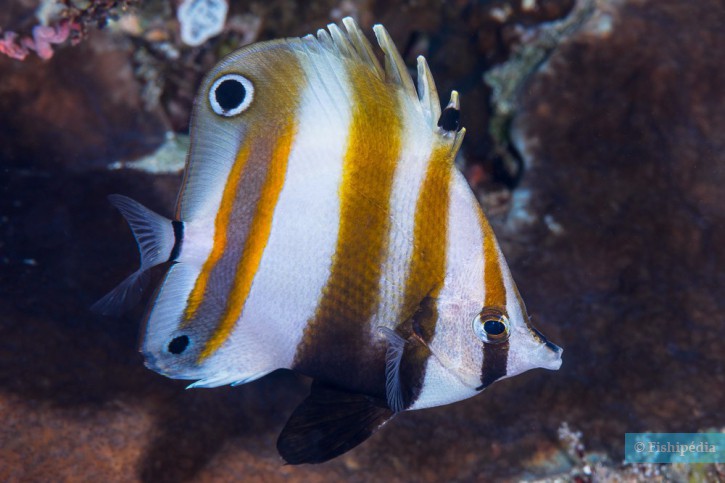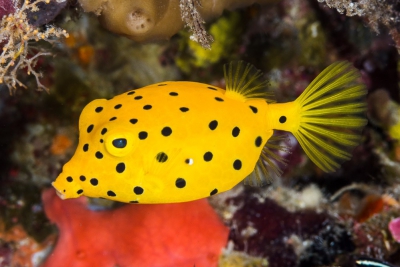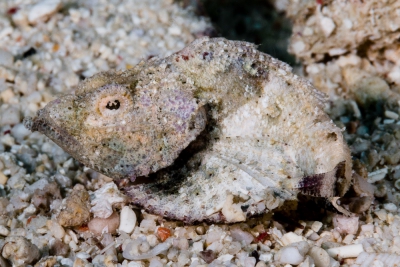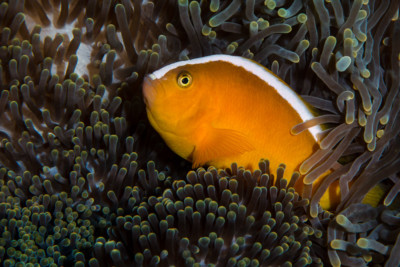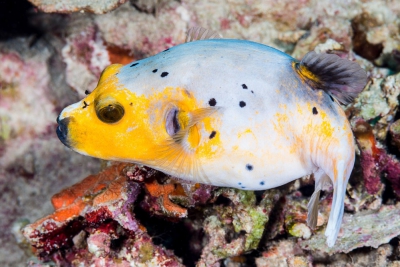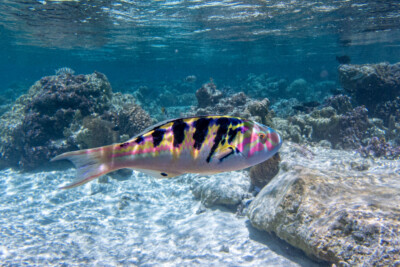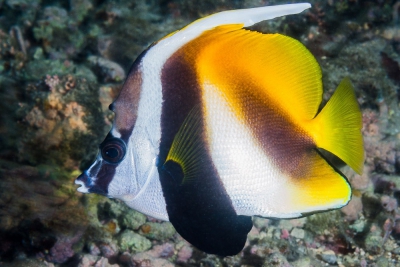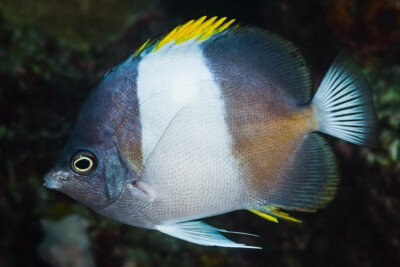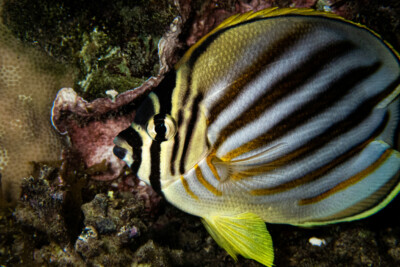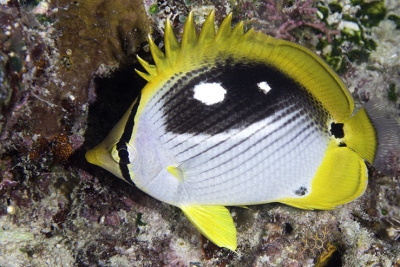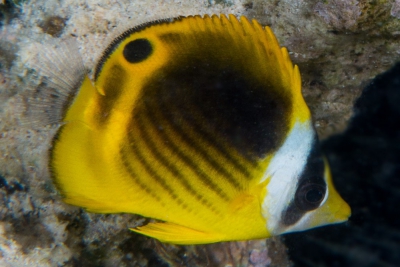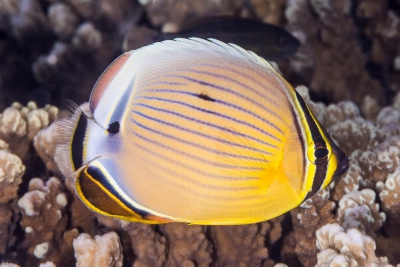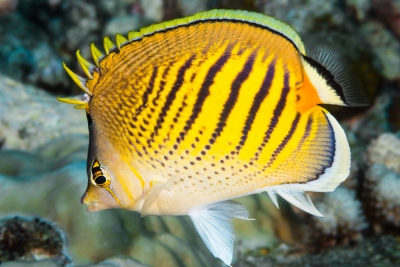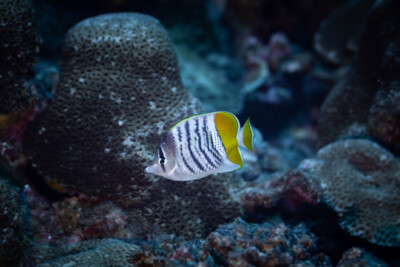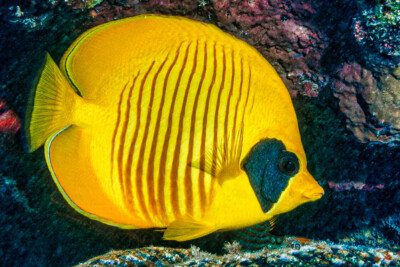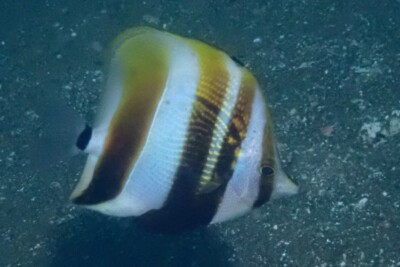twospot coralfish
| Scientific name | Coradion melanopus |
|---|---|
| Descriptor | Cuvier |
| Year of description | 1831 |
| IUCN category (World) | LC |
| Family | Chaetodontidae |
| Genus | Coradion |
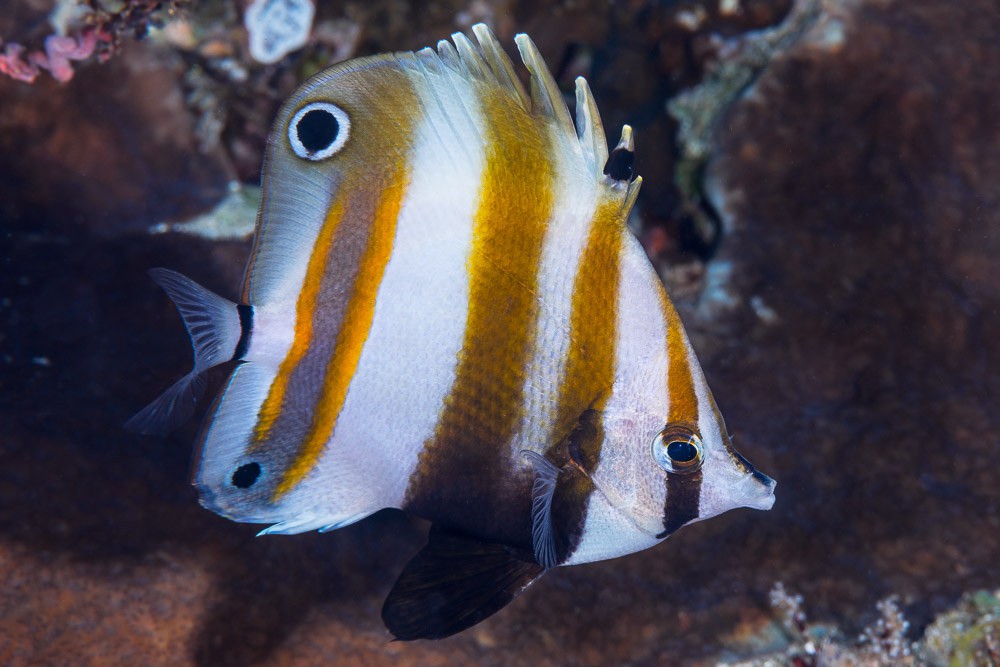

Introduction
Coradion melanopus is a tropical fish originating from the Indonesian seas and the sea of the Philippines. It is also found in the Great Barrier Reef.
Who is it?
Morphology
-
Average size12 cm
-
Maximum size15 cm
-
ShapeCircular
-
Patterndiagonal stripes
-
Average size12 cm
-
Maximum size15 cm
-
ShapeCircular
-
Patterndiagonal stripes
How to recognize This fish ?
This species is tricolored with a predominantly yellow, brown, and white body. It is covered in vertical white stripes.
Sexual dimorphism
Dimorphism not specified.
Behaviour & Life cycle
-
dietomnivorous with carnivorous tendency
-
Sociabilityliving as a couple
-
territorialNo
-
Way of livingdiurnal
Adults are usually found in pairs and reside in reefs searching for sponges..
Generally, they pay little attention to other species. However, they may show some signs of aggression towards their conspecifics.
Reproduction
-
Reproductionovipare qui pond en eau libre
Coradion melanopus is an oviparous fish that spawns in open water. Its reproduction mode is still poorly understood.
Harmless species
This species does not represent any particular threats to humans when encountered in its natural environment.
Origin and distribution
Conservation status of populations (IUCN)
What is its habitat?
Natural environment characteristics
-
Temperature23 - 27 °C
-
Depth10 - 30 m
-
FlowMedium
Biotope presentation
This species of twospot coralfish is most often found at depths ranging from 10 to 30 meters.
Species of the same biotope
To go further
Sources & Contributions
Participation & Validation
The Fishipedia team and specialist contributors are committed to providing high-quality content. However, although the information comes from scientific sources or testimonials from specialists, the cards may contain inaccuracies.

Benoit Chartrer
Translation
Translation done with the valuable contribution of our translators, who make this information available to a wider audience. We sincerely thank them for their commitment.
Scientific partners
Tags
Species of the same family
Same genus
Species of the same biotope
